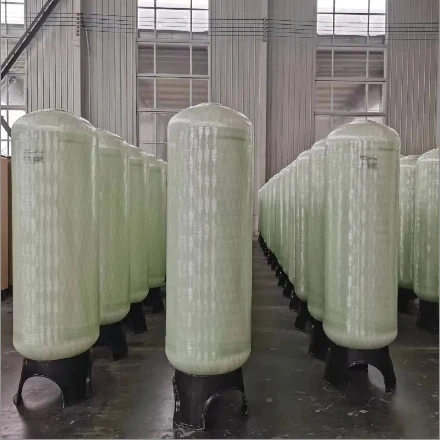loading...
- No. 9, Xingyuan South Street, Dongwaihuan Road, Zaoqiang County, Hengshui, Hebei, China
- admin@zjcomposites.com
- +86 15097380338
- Welcome to visit our website!
Designing and Analyzing Sectional Water Tank Structures for Efficient Water Storage
The Importance of Sectional Water Tanks A Comprehensive Overview
In today's world, where the demand for water is ever-increasing, finding efficient storage solutions is crucial. One such solution is the sectional water tank, a popular choice for both residential and commercial properties. Sectional water tanks are designed to be modular, allowing them to be assembled on-site to meet specific storage needs. This article explores the benefits, applications, and considerations surrounding sectional water tanks.
What Are Sectional Water Tanks?
Sectional water tanks are made up of individual panels that can be easily transported and assembled to create a larger tank. These panels are typically constructed from materials such as stainless steel, fiberglass, or reinforced plastic, ensuring durability and resistance to corrosion. The modularity of sectional tanks allows for flexibility in design and capacity, making them suitable for a variety of environments.
Advantages of Sectional Water Tanks
1. Customizability One of the primary benefits of sectional water tanks is their customizable nature. They can be built to different sizes and shapes, accommodating the specific requirements of a site. This is particularly useful for urban areas where space is limited.
2. Easy Transportation and Installation Since sectional tanks are made up of separate panels, they can be transported easily to different locations. Once on-site, they can be quickly assembled without the need for heavy machinery, which reduces installation costs and time.
3. Cost-Effective Sectional water tanks represent a cost-effective solution for water storage. They require less material compared to traditional tanks, and their modularity can lead to reduced labor fees during installation. Furthermore, their durability minimizes the need for frequent maintenance or replacement, offering long-term savings.
4. Versatility These tanks can be used in a variety of applications, including residential rainwater harvesting systems, agricultural irrigation, fire suppression systems, and industrial processes. Their robust design makes them suitable for both potable and non-potable water storage.
5. Space Efficiency In areas where space is at a premium, sectional water tanks can be designed to fit specific contours or constraints. This means that they can be installed in tight spaces, unlike traditional cylindrical tanks, which require a larger footprint.
Applications of Sectional Water Tanks
sectional water tank

Sectional water tanks are utilized in numerous sectors. In residential settings, they are often employed for rainwater collection and storage, helping homeowners to reduce their reliance on municipal water supplies. In agricultural applications, they are used for irrigation, providing farmers with the necessary water without depleting groundwater resources.
In industrial contexts, these tanks play a crucial role in processes such as cooling systems and wastewater treatment. They can also be vital in emergency response plans, providing large quantities of water for fire-fighting operations.
Considerations When Choosing Sectional Water Tanks
While sectional water tanks offer numerous advantages, there are several factors to consider when selecting the right tank for a specific application.
1. Material The choice of material impacts not only the durability and lifespan of the tank but also its suitability for storing potable water. Stainless steel tanks may be preferred for drinking water, while fiberglass might be ideal for non-potable applications.
2. Regulatory Compliance It's essential to ensure that the chosen sectional tank complies with local regulations and standards, especially for potable water storage.
3. Maintenance Requirements Although sectional water tanks are generally low-maintenance, periodic inspections and cleanings may still be necessary to ensure the quality of the stored water.
4. Installation Location The site characteristics, such as soil conditions and available space, should be evaluated to determine the best tank design and placement.
Conclusion
In summary, sectional water tanks represent a flexible, cost-effective solution to the growing demands for water storage in various settings. Their adaptability, ease of installation, and durability make them a preferred choice for many applications. By understanding their benefits and considerations, users can make informed decisions that help secure water resources effectively, aligning with both environmental sustainability and practical needs.
-
GRP Structures: The Future of Lightweight, High-Performance EngineeringNewsJun.20,2025
-
FRP Water Tank: High-Performance Storage for Corrosive and Clean Water SystemsNewsJun.20,2025
-
FRP Square Tube: The New Industry Standard for Chemical and Structural ApplicationsNewsJun.20,2025
-
FRP Pultruded Profiles: The Ultimate Choice for Lightweight Structural StrengthNewsJun.20,2025
-
FRP Handrails: The Safer, Smarter, and Stronger Choice for Modern InfrastructureNewsJun.20,2025
-
FRP Grating: The Smart Solution for Durable, Lightweight Industrial FlooringNewsJun.20,2025
-
Why Choose a Galvanized Water Tank for Your Storage NeedsNewsMay.21,2025
